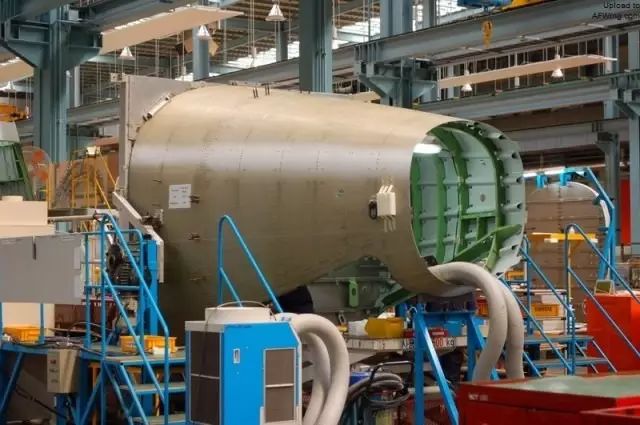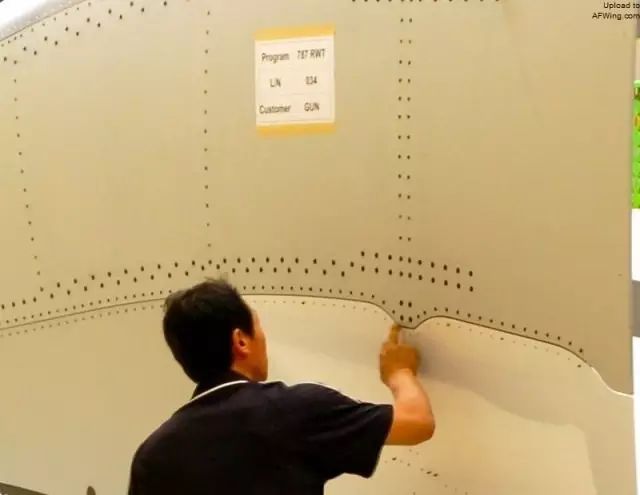The Story of Boeing 787 and Composite Materials
 Dec 18, 2023|
Dec 18, 2023| View:217
View:217The most distinctive feature of the Boeing 787 is its extensive use of advanced composite materials, even the fuselage is made of composite materials, which account for approximately half of its structural weight. By comparison, the proportion of 757 aircraft is approximately 7%, while that of 777 aircraft is approximately 11%.

Traditional aircraft use aluminum alloy structural fuselage. This photo is taken of the tail section of 787 in the aviation center, which may have been left over from trial production.
The most distinctive feature of the Boeing 787 is its extensive use of advanced composite materials, even the fuselage is made of composite materials, which account for approximately half of its structural weight. By comparison, the proportion of 757 aircraft is approximately 7%, while that of 777 aircraft is approximately 11%.
Traditional aircraft use aluminum alloy structural fuselage. This photo is taken of the tail section of 787 in the aviation center, which may have been left over from trial production.
Note that composite materials also use rivets, but the material of rivets is titanium alloy or Monet alloy, which is necessary for corrosion prevention.

The rivets used in composite materials cannot use ordinary pneumatic impact riveting guns, only extrusion riveting guns can be used, because the biggest drawback of composite materials is their poor impact resistance.
The definition of composite materials is very broad, and the composite materials used in airplanes mainly refer to those made of carbon (graphite) fibers, glass fibers, Kevlar fibers, and resins.
Taking carbon fiber composite materials as an example, under the same quality conditions, their strength is 7 times that of aluminum alloy. The benefits of using composite materials mainly come from here. Since composite materials are light and sturdy, airplanes made of composite materials are lighter and can carry more passengers and cargo. Aluminum alloy is prone to corrosion, and after flying for a long time, there may be fatigue problems and fatigue cracks.
But composite materials are different, they do not corrode or fatigue. There are many benefits that this brings. During traditional aircraft overhaul, the floor beams under the aircraft toilets, kitchens, and front and rear cargo compartments often corrode to a white color. Composite materials are not afraid of corrosion.
The fuselage of this 787 is made of composite materials, with much higher strength than the aluminum alloy fuselage. Therefore, the side windows of the 787 cabin can be opened larger, and the air pressure and humidity inside the cabin can also increase. The air pressure in the cabin of a metal aircraft is equivalent to an altitude of 2400 meters. No matter how high the air pressure is, it is too close to the safety limit of the fuselage structure.
Many people feel that the air in the cabin is too dry when flying, which is intentional. If it is too humid, passengers will feel comfortable, and the fuselage will not be able to withstand it and will corrode. Composite components can be made to have large and complex shapes, which is relatively easy. Due to the use of composite materials, 787 has reduced 1500 sheet metal parts and 40000 to 50000 rivets.
Composite materials are representative and directional. Composite materials are designed materials, that is, researchers use materials with known properties: fibers and resins, point them in different arrangements and combinations, calculate them, and then transform them into real materials. Let it have the best mechanical performance in one or several desired directions, and make some compromises in other less important directions.
The most typical example is that composite materials are the strongest in the fiber direction, and changing the direction of fibers or fiber cloth layers can achieve firmness in other directions on flat/curved surfaces.

But the interlayer strength of the fiber cloth is still poor, and it is easy to layer vertically. But this is a tolerable flaw. What materials have no weaknesses? Aluminum alloy is good, but prone to corrosion; Titanium alloy is good, but it is expensive and prone to cracking.












